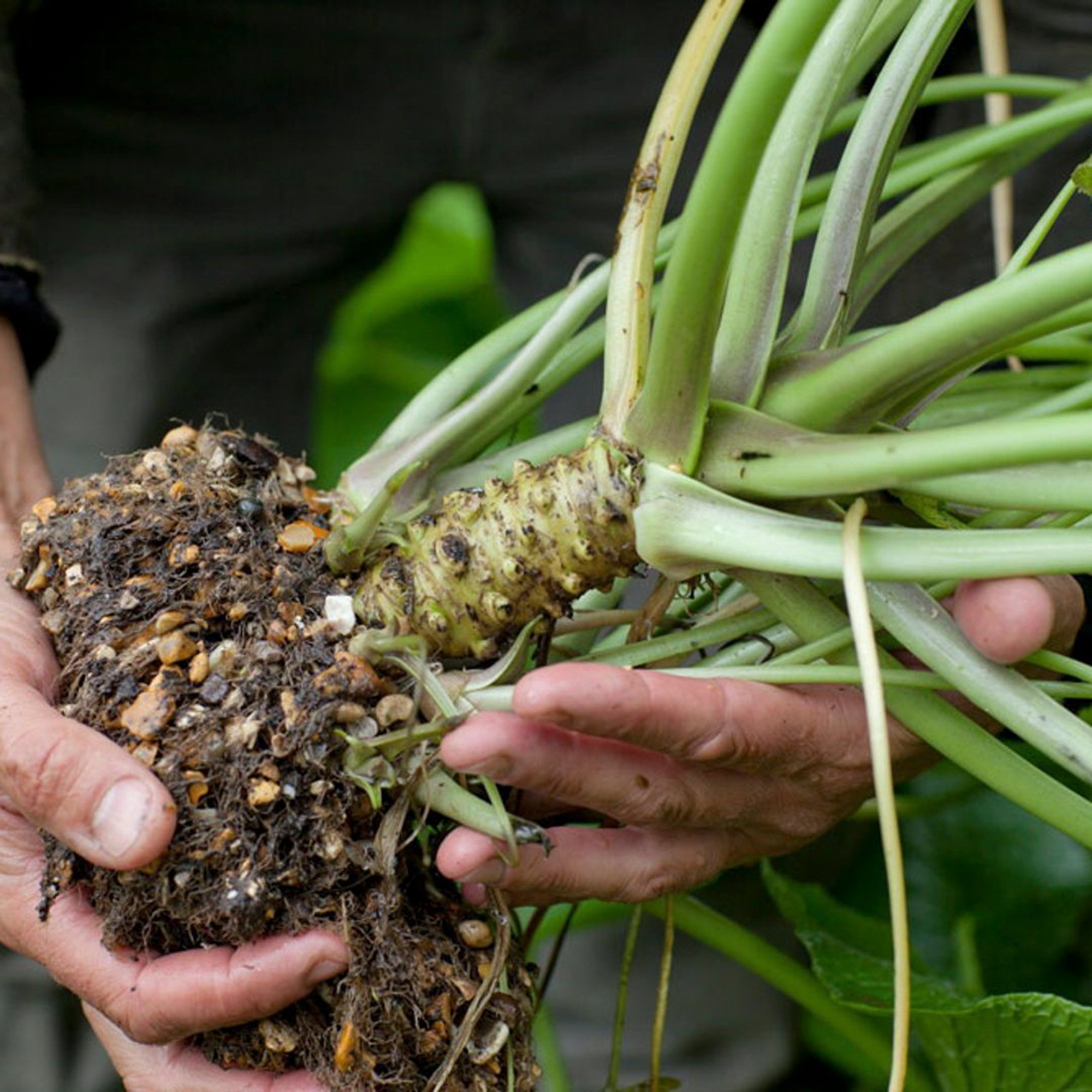
‘The perfect challenge’: British wasabi growers on how their product is spicing up Japanese cuisine across UK and Europe
- In Hampshire, in the south of England, farmers have applied knowledge and expertise from Japanese growers to cultivate home-grown wasabi
- Established 13 years ago, The Wasabi Company now produces 1.5 tonnes of wasabi per year to restaurants in the UK and Europe
On a farm in Hampshire in the south of England, pungent wasabi plants that can be ground up to provide an essential condiment to accompany traditional Japanese dishes like sushi are flourishing.
Starting with 400 wasabi plants 13 years ago, The Wasabi Company, founded by CEO Jon Old, now harvests roughly 1.5 tonnes per year after much trial and error throughout the cultivation process.
Helped by the growing popularity of Japanese cuisine in Britain, the company sells wasabi to several Japanese restaurants in London and beyond, and Michelin-starred restaurant chefs such as Gordon Ramsay and the 5-star Dorchester Hotel near Hyde Park.
The freshness of its produce has helped The Wasabi Company establish a considerable reputation, with its exports now going to seven European countries.

At the company’s farm near the village of Micheldever, you will find lush dark green wasabi leaves spread out under protective black netting.
Groundwater pumped from 40 metres below flows like a stream underfoot, and thick gravel of different shapes and sizes replicates the natural streams where wasabi, known by the scientific name Eutrema japonicum, grows in Japan.
Hong Kong hi-tech farm tests growing wasabi indoors as Japan’s harvests drop
It has been challenging to perfect the environment, but the company uses former watercress farms, which have similar conditions.
A former watercress farmer, Old was inspired to become the first commercial grower of wasabi in Britain.
In 2010, one of Old’s regular watercress customers, a South African chef, approached him about the possibility of growing wasabi, and the rest is history.
Old now runs three different wasabi farms in the south of England with his son, Guthrie, 20, who helped him until late August.

Before 2010, Old had only heard of wasabi as an ingredient for sushi.
When he discovered that it needed the same conditions as watercress – which uses moving water to provide a steady supply of fresh minerals – he decided to try it.
Although he obtained his first batch of 20,000 wasabi plants from a farmer in Japan’s Yamanashi prefecture, his initial attempts at cultivation on his Dorset farm ended with half the crop dying.
Sushi without wasabi? Climate change reduces Japanese farms’ output
But a trip to Japan’s Shizuoka prefecture to learn from experienced wasabi farmers – initially met with some hesitation from growers – proved invaluable.
Armed with new expertise, Old returned to Britain and began to apply it to his own wasabi plants, typically harvested after 18 months to two years, when the rhizomes grow to around 2cm to 3cm thick and 10cm long.
Old started marketing his wasabi to restaurants in 2012, and initially encountered resistance from chefs who were sceptical of wasabi grown in Britain. Japanese restaurants preferred to import Japanese imported produce. Few were willing to take a chance on the fledgling Wasabi Company.
It was only after he invited the chefs to his wasabi farms, to see how it was being grown and to taste some freshly picked samples for themselves, that he gained a reputation for quality.
Why real wasabi is considered ‘green gold’ in Japan
When demonstrating the quality of their produce to visitors, Old and Guthrie often take a freshly harvested wasabi rhizome and scrape the outer layer with a knife, releasing its pungent aroma, Guthrie said. When visitors taste it, they experience an immediate burst of spiciness followed by a subtle hint of sweetness.
“The most interesting thing I find about wasabi is that if you taste it right after grating, it doesn’t have much flavour,” Guthrie said. “But after five minutes, all the heat comes out – and then after 15 to 20 minutes, it loses its flavour again.”
The Wasabi Company not only enjoys the high regard of chefs across Britain, but also supplies Japanese and Western restaurants in the Netherlands, France and Sweden, among other countries.
For Guthrie, who joined his father in the business two years ago, working his way up through The Wasabi Company’s ranks was a welcome challenge, allowing him to learn about the business.
More than anything, I’m really grateful to Japan for giving us these wonderful ingredients, which have also opened up the European market
“I started pretty much packing boxes for a year and then slowly worked my way up,” Guthrie said. “It’s been great just learning about something new and challenging myself. But growing wasabi in the UK was always going to be the perfect challenge.”
The company has a wide range of products on its website, from wasabi vodka and mayonnaise to grow-your-own wasabi kits. The wasabi rhizomes cost £10 (US$12.30) for 50 grams (1.8oz).
“More than anything, I’m really grateful to Japan for giving us these wonderful ingredients, which have also opened up the European market,” Old said.

